Overall results
| Test method | f-ratio | Surface sampled | FSR | FWHM | Delta CWL | Note | |
| Acuter 40 mm (#1) |
Hydrogen lamp | full aperture |
11.0 A | 0.64 A |
|||
The CWL of the etalon is tuned by mechanical compression.
The CWL of the etalon is not uniform and changes significantly across the aperture of the etalon
Measurement in diffuse light using an hydrogen lamp
Optical setup: hydrogen lamp => diffuser => Acuter 40 etalon (including ERF) => Nikon Z6 with 85 mm f/1.8S lens
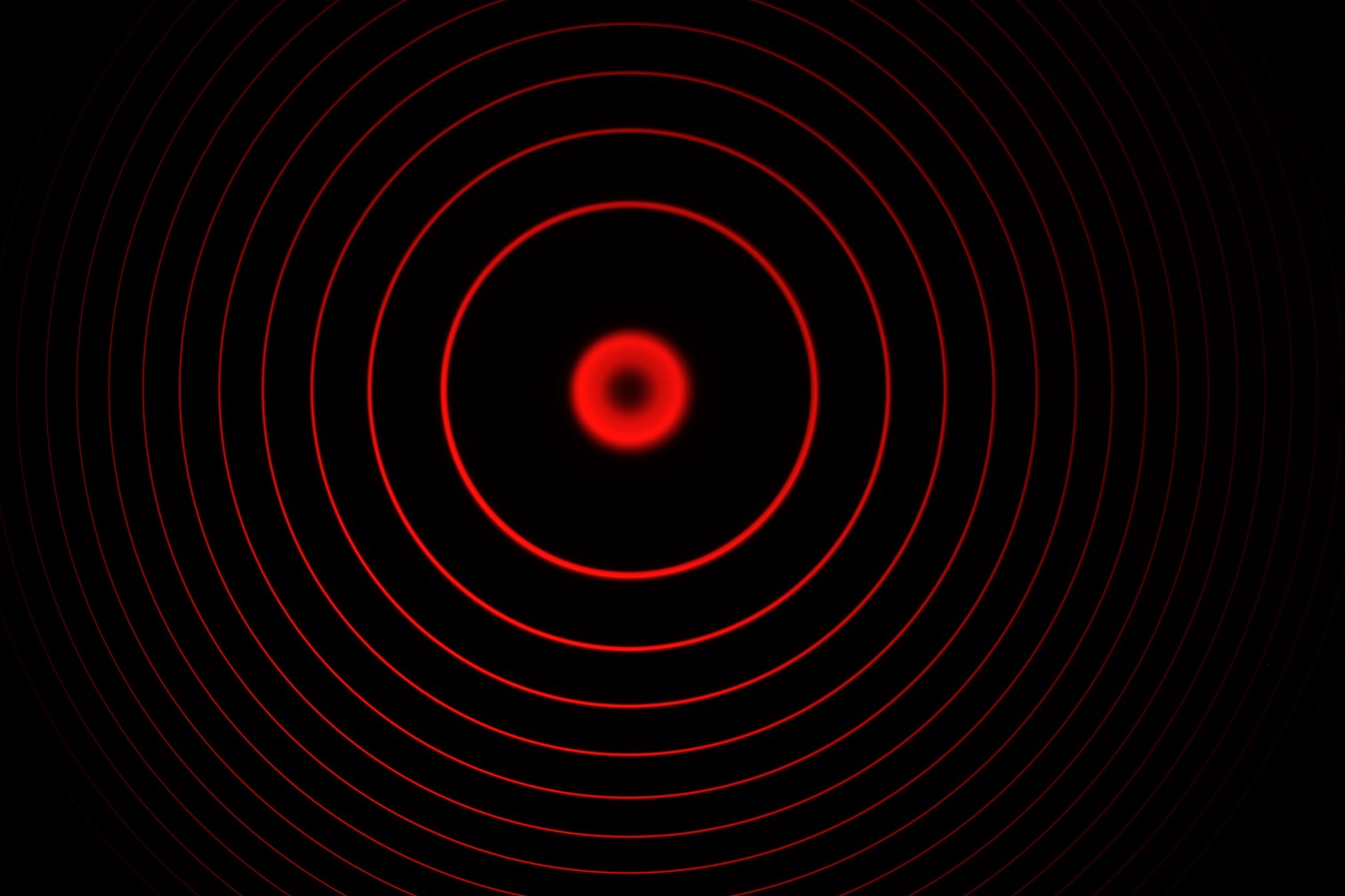
Nikon Z6 - 85 mm f/1.8S lens at f/2.0 - RAW mode - 100 ISO
NB : no effort was made to tune the etalon on Ha.
The interference fringes are not symetrical. Their profile is closer to a Voigt function rather than the expected Lorentz function.
The inner interference ring is very disymetrical.
The FSR is equal to 11.0 A and the FWHM measured over the full-aperture is 0.64 A.
Quantitative analysis of the variation of the CWL over the aperture of the etalon
Using the same setup as a above, but this time with a lens aperture of only 20 mm (f/4), it is possible to scan the variation of the CWL across the aperture of the etalon. Changes are even larger when the eye is used (the pupil aperture is smaller than 6 mm).
Since the diameter of the central ring is proportional to the delta CWL (from Ha), changes in the diameter of the central ring reflect changes in the CWL.
The following images show the change along an horizontal diameter.
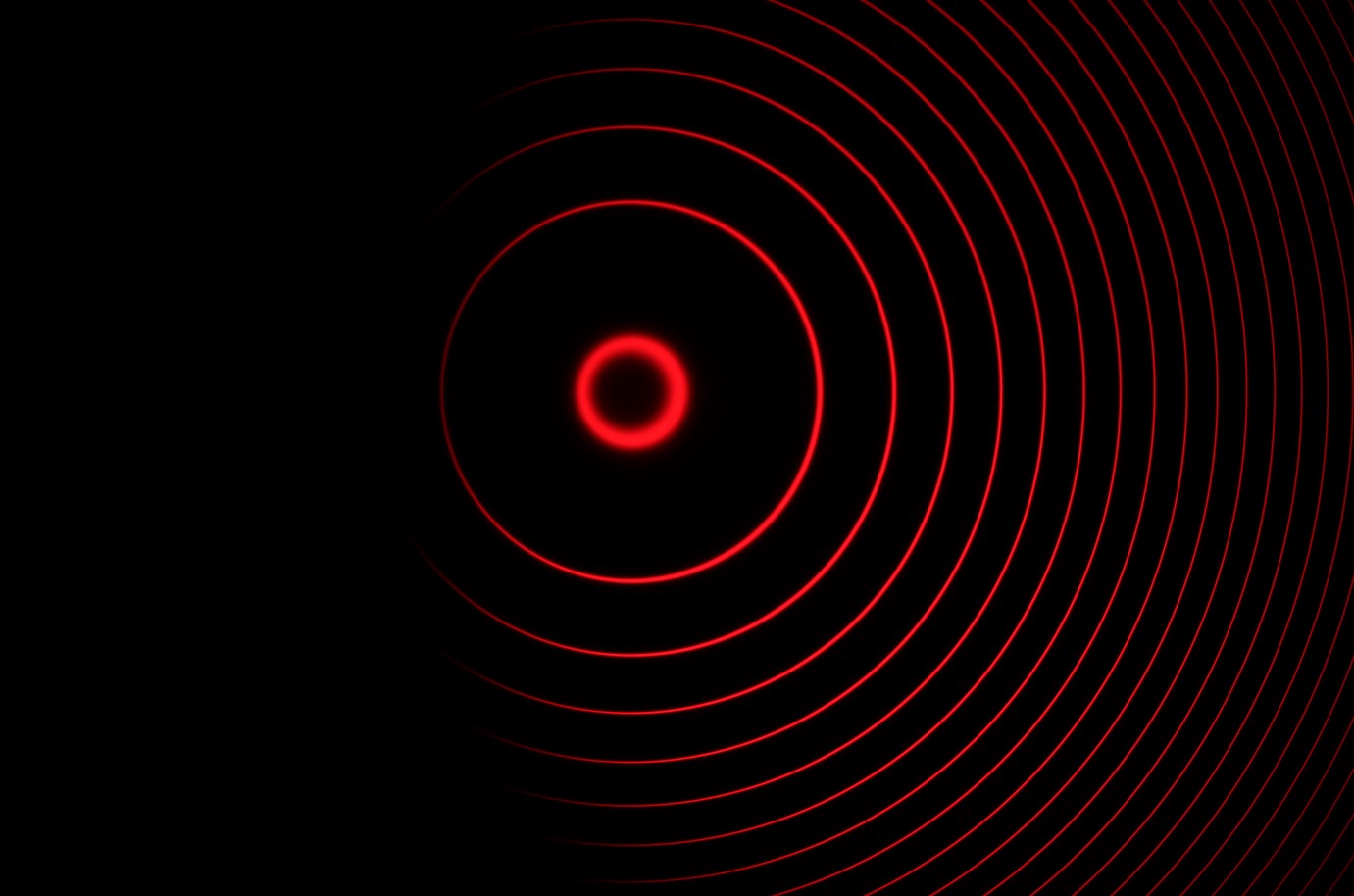
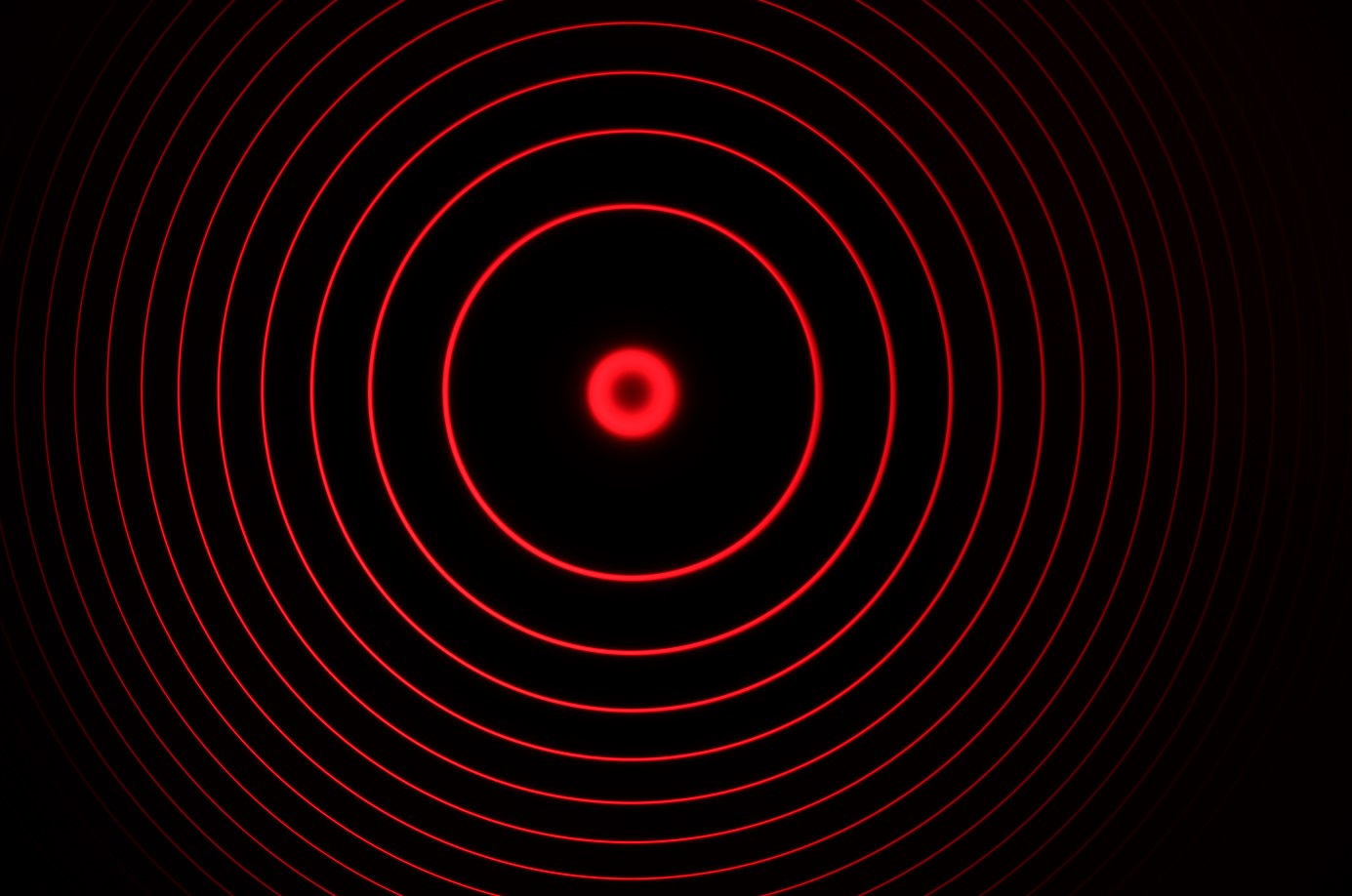
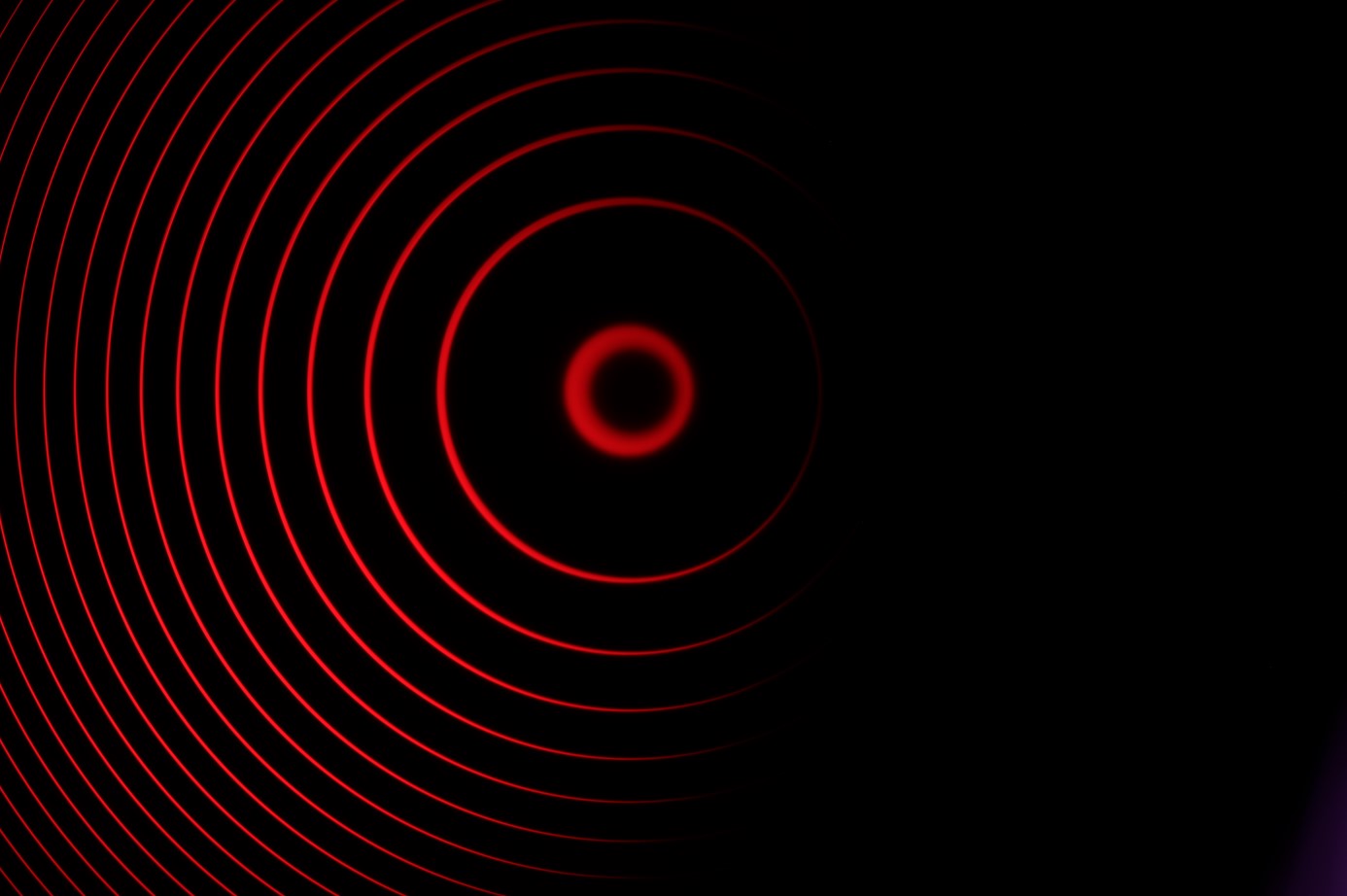
The delta CWL changes from 0.8 A (on the left), to 0.4 A (on the center) and 1.0 A (on the right), i.e. by about ±0.3 A. The effect is even larger if the sampled area was reduced to 10 mm or less (i.e. by visual observation with the naked eye).
This means that even if the FWHM, measured locally, was very small, the change in the CWL accross the aperture of the etalon largely increases the average FWHM measured over the aperture of the etalon.

Qualitative analysis of the variation of the CWL over the aperture of the etalon
The test is done in collimated light using an hydrogen light as a light source. See here for the methodology.
Optical setup : hydrogen lamp => 4 mm aperture stop at the focus of the Acuter 40 f/10 objective => Acuter etalon => Nikon Z6 with 85 mm f/1.8 lens at full-aperture, with lens focused on the etalon.
The f-ratio of the light beam incident of the etalon is 4/400 = f/100 (which is close to a collimated beam).
If the CWL, FWHM and transmission of the etalon were uniform over its aperture, the light intensity would be uniform over its aperture, similar to this example of a Lunt 40 etalon :

Lunt 40 mm etalon in collimated beam (f/146)
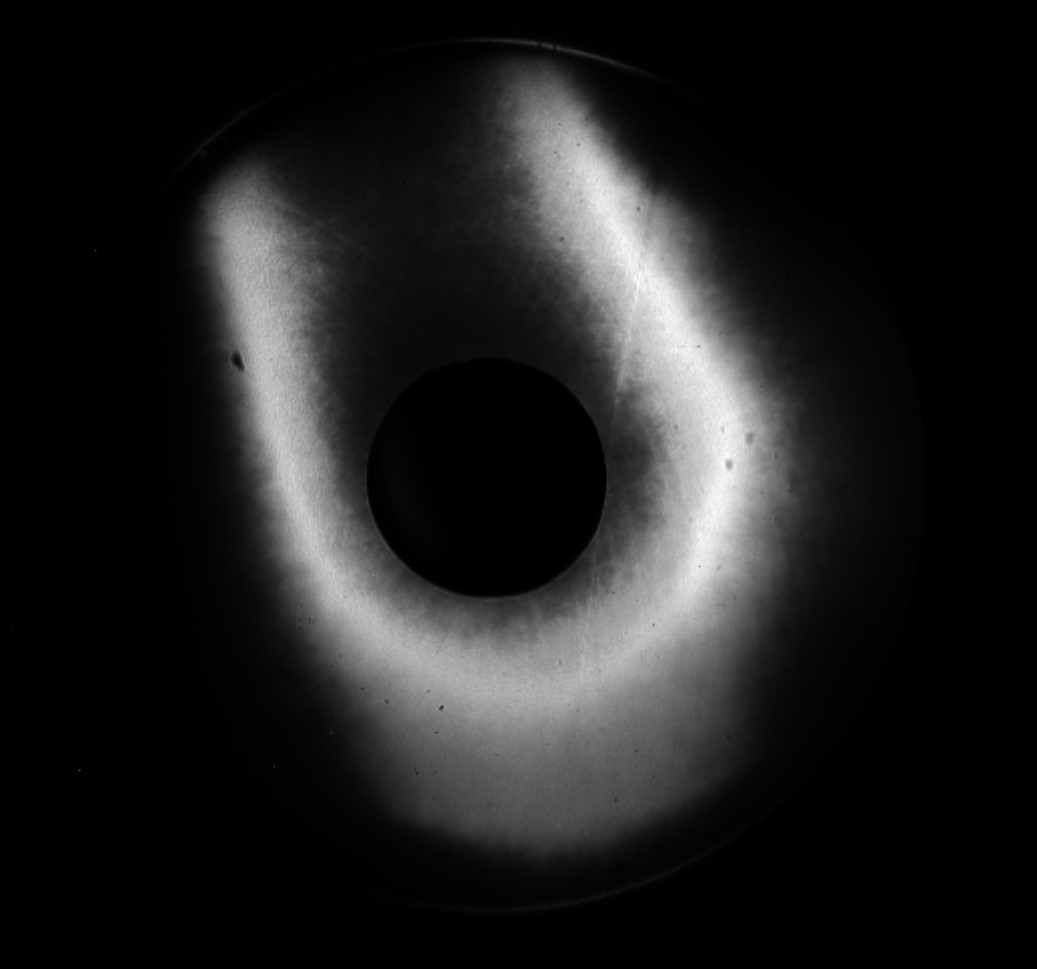
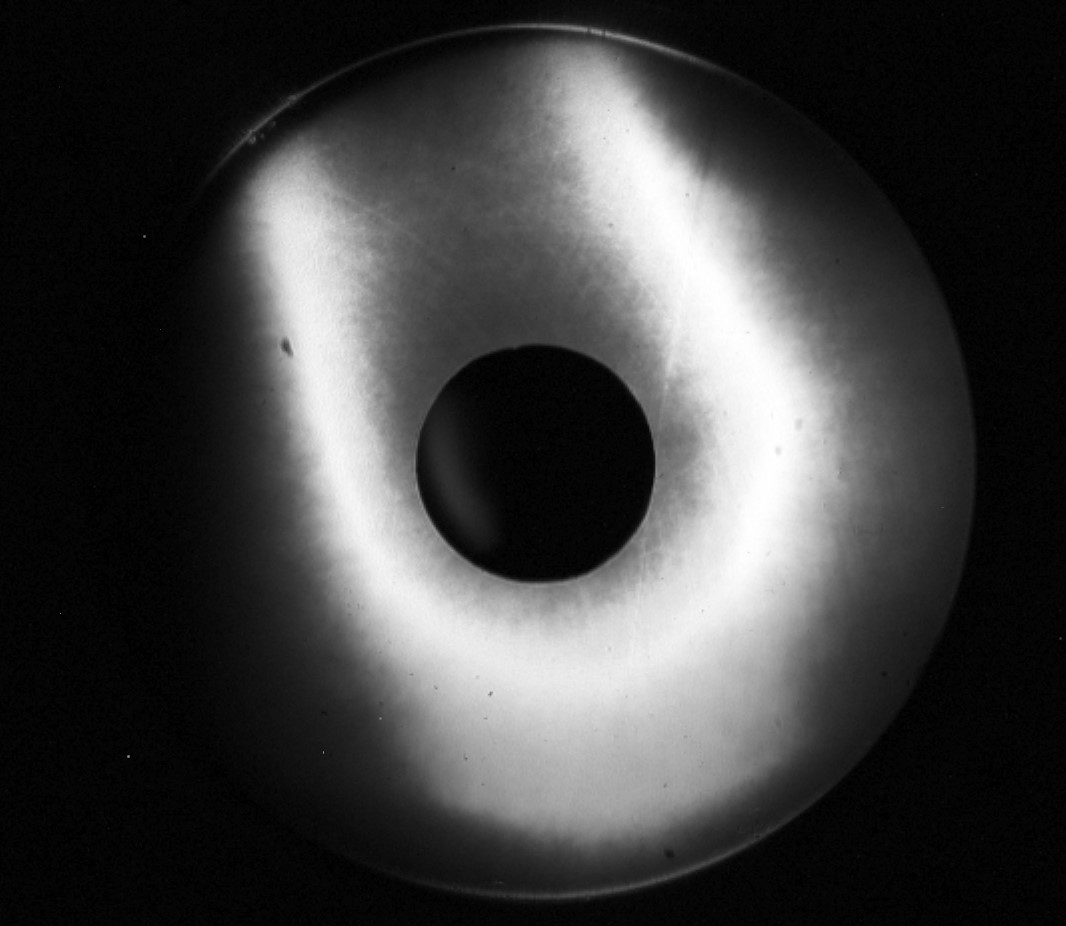
Acuter 40 mm etalon in collimated beam (f/100). Linear visualisation on the left, log vizualisation on the right.
As anticipated with the tests in diffuse light, the test in collimated beam shows that the CWL is significally non uniform accross the aperture of the etalon. A significant area of the etalon is away from Ha.
NB:
- the central dark spot is the shadow of the central spacer.
- the diagonal dark area pointing to 11 o-clock is probably the shadow of a mechanicism related to the mechanical compression of the etalon. Indeed, the pointing angle of this shadow changes in line with the rotation of the tuning mechanism.
- the central dark spot is the shadow of the central spacer.
- the diagonal dark area pointing to 11 o-clock is probably the shadow of a mechanicism related to the mechanical compression of the etalon. Indeed, the pointing angle of this shadow changes in line with the rotation of the tuning mechanism.